Member Spotlight: ViZible Media
A large format OOH company with even larger priorities.

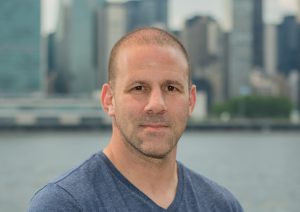
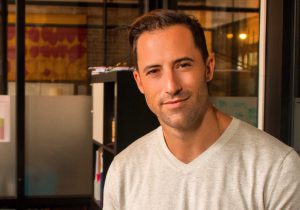
About ViZible Media Group and The Co-Founders
ViZible Media Group is an out-of-home (OOH) media company specializing in large format outdoor advertising throughout New York City and Los Angeles, as well as other emerging markets. It was co-founded in 2016 by two industry vets, Dan Barnes and Zac Zabner. Zac began his OOH career in taxi tops in New York City at Pure Taxi Media, then started his own company called InCharge Entertainment Marketing, a full service out-of-home experiential marketing shop that services brands and agencies. Prior to ViZible Media, Dan built his knowledge of OOH by running sales and operations at OTR Media, a full-service outdoor advertising company that specializes in providing media sales and billboard maintenance.
How ViZible Media Was Started
Dan Barnes: ViZible Media was a venture I had been working on for over a year before it’s initial launch; preparing my finances and building a target
property list as potential inventory. The most important step was to find someone whom I not only had the ability to work with and trust but who had the guts to take a risk and start something from scratch. I’ve had Zac as a friend for a decade and knew he’d be the perfect person to approach and say “Hey, I have this idea to start an OOH company that gives back,” because of his personal values, business ethics and background, and affiliations with different charitable organizations. So that’s exactly what I did, signed on the right partner.
Zac Zabner: We wanted to start a business that was grounded in a few principles and really stick by them as we grew, so we established what has guided us ever since.
The first principle is to give value. We want to make sure we develop and deliver high quality inventory, which meets one of two category standards: undervalued media in the nation’s top DMAs – including emerging pockets in markets with huge share of voice potential, close to no other inventory or competition, and in areas that are trending quickly towards increased buying power – and establish high impact media in the busiest streets of the top DMAs so we can develop those areas and create opportunities with proven results for brands.
Our second principle is to give results. Boutique media vendors like us have the ability to provide more account service, more customer service and more of a personal touch than some of our corporate competitors. We provide seamless campaign execution, posting removal, and accurate reporting – all of which we feel are the pillars of OOH and something we really emphasize.
Our third, and most important principle, is to give back. A big part of why we started this venture was to be able to do something that was a little more than just doing business. We’re a partner of the National Ovarian Cancer Coalition (NOCC) and really emphasize in our messaging that a portion of our profit from each campaign supports this cause. We like to let our clients know that they are part of the fight. This includes letting the NOCC know which clients assisted in our contributions. Our clients really feel that they’re doing more than just handing over a contract, and it’s something we take immense pride in and are also humbled by.
The Origin of Giving to NOCC
Dan Barnes: Giving to the NOCC started with the loss of my mother to ovarian cancer within the last two years. I really wanted to find a way to support this cause and play a part in the quest to find a cure. I’m a firm believer that if we find a cure for one type of cancer the others will follow. I was working for another OOH company in New York and didn’t think it was fair to ask them to contribute a portion of their profits to my own personal cause. I knew we were breaking new ground in the industry by contributing a portion of every campaign contract to this cause. I wanted to start something that allowed our partners in the industry to feel like they were part of something more than their everyday jobs, more than just posting advertising; they are contributing to a life-saving venture.
The Impact of Giving Back
Zac: The impact has been huge for us and our clients, both in the way we approach business every day with a purpose as entrepreneurs, and in how our clients feel about doing work with us and about themselves because of their contribution. It’s been incredible. Our goal and our drive to rid the planet of ovarian cancer has been really, really cool for us throughout this journey and we have found that our clients, friends and colleagues in the business have all been looking for ways to give back in some way. Everyone gets a bit inundated with their work and personal lives, and their kind-hearted intentions fall through the cracks, so they’ve been really appreciative of the opportunity to not just do their jobs but give back with us.
There’s a quote by Richard Branson that really stood out to us in the beginning where he says, “If you aren’t making a positive difference in other people’s lives, then you shouldn’t be in the business.” We really feel that if you’re not doing good business, you’re not doing business at all.
What It’s Like to Be a Geopath Member
Zac: Being a Geopath member allows us to be part of a very niche community of individuals and companies that are considered authorities in this particular field, which is very cool. This great community not only provides us with more exposure to member agencies, but as we’ve seen during the short time that we’ve been part of it, a lot of key insights and data that will help us grow as a company. It also affords us the opportunity to give value back to the community through our own creative deal making, our own inventory and our own insights. It also creates an even playing field with our larger corporate competitors, which is great considering we are a bootstrap venture. Some of the key terms within our industry are reach, frequency, location, and being part of Geopath literally epitomizes that for us because the hundreds of agencies in this industry can now see us.
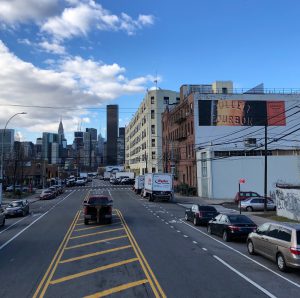 Dan: As soon as we became a Geopath member, we let everyone know, and we’ve had great feedback because of the reputation Geopath has for being an indispensable part of our industry’s business practices. When people see Geopath, they are on board. They know the information we send in proposals is backed by Geopath’s Data and Analytics.
Dan: As soon as we became a Geopath member, we let everyone know, and we’ve had great feedback because of the reputation Geopath has for being an indispensable part of our industry’s business practices. When people see Geopath, they are on board. They know the information we send in proposals is backed by Geopath’s Data and Analytics.
Zac: Most companies won’t even consider anyone until it’s part of Geopath. This is mostly due to companies having not only their own protocols, but needing to abide by their clients’ protocols, too. Luckily, as Geopath members, we have started to see a lot more companies reaching out. It’s been terrific.
Key Opportunities and Challenges In The OOH Industry
Zac: A big thing for the OOH industry is innovation. OOH is such a strong static format media, and has been for so many years, so there is a tendency just to fall back into the strength of that. I think there is an opportunity to always innovate and push the limits of a message’s creativity – especially the where and how to communicate it. The challenge of that is finding the balance of maximizing the impact with a return on spend while staying in harmony with the people in the cities that you’re targeting. You need to deliver value first to the community, which we know is sometimes very difficult.
Dan: One of the most difficult things for the OOH industry is staying in harmony with the cities themselves by keeping them happy and not overextending the number of signs in each area. Some cities have really bit back against the sign industry by outlining strict rules and guidelines sign companies must adhere to. We just want to make sure we’re keeping everyone happy while playing within the rules set forth for OOH signage in the cities we have inventory.
Zac: I worked in commercial real estate before OOH, which has been a huge asset in building relationships here in LA and showing we can provide high value.
Unique Real Estate
Dan: In New York, it’s not like finding a needle in a haystack, but finding a needle in a stack of needles. We’ve been able to go into these trendy, up-and-coming areas like, Long Island City, Red Hook, and Green Point, where they had little to no signs before and, while keeping within legalities associated with signage, bring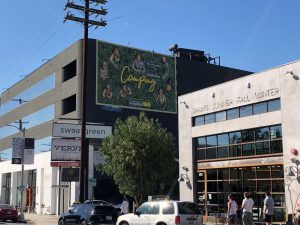 new signs to market. It’s important for us to have people on the ground in major demographics to effectively do this.
new signs to market. It’s important for us to have people on the ground in major demographics to effectively do this.
Zac: We try to stay ahead of the trends, too. We’re investing in places now such as Silver Lake, Echo Park, and as Dan said Long Island City and Red Hook because we see what is happening there.
Dan: We’re investing in the future of these areas that are beyond just Manhattan and Williamsburg.
Zac: If we find an opportunity that we see value in, we go for it. We don’t just go for the gentrified areas. Even though that can be where the majority of the increased buying power is, if we see a great opportunity in an area that we have relationships with, we’ll place a bet on it.
What Makes An OOH Campaign Highly Effective
Zac: If I had to give one word for why a campaign works, I would say impact. You want to make an impact. Marketing is all about telling a story, and OOH is a critical part of that because we deliver the stories to consumers while they are out living their lives. We’re bridging the gap between the TV, radio and digital parts of a campaign through reach and frequency to make an impact. We have the ability to increase the return on all the other investments and media because we catch consumers in their daily lives and routines – over and over and over. And OOH has so many different platforms, versions, shapes and sizes, so we get to bend the message around each one. At the end of the day, you need to make an impact.
Dan: For me, it’s always about location, location, location. OOH is the ultimate complimentary medium, but you have to make sure the client’s message and creative is seen, and not just jumbled in with an over-abundance of signs. The question to ask is “How can I have my message seen by people where they live, where they work, where they play?” and the answer is by being the only sign in an area so you can make that impact. The last thing we want is our client’s message and creative, which they worked hard to produce, to be lost in a sea of competing ads.
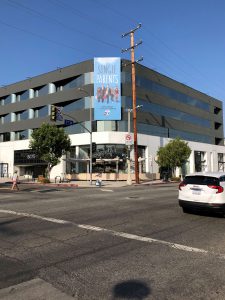 The Common Misconceptions of OOH
The Common Misconceptions of OOH
Zac: I don’t think people really understand the entire breadth and scope of OOH. Most people just assume billboards and taxi tops. Because they are an iconic part of the New York City landscape, people don’t even realize they are being messaged to.
Dan: I think one of the things Zac really touched upon here is that people subconsciously see everything. Your eyes see everything, and your brain absorbs that information for future recall. By passing a sign every day or several times a day the client’s message is now ingrained in target audience’s mind. Whether you consciously realize those signs are there or not doesn’t always matter because you’ve actually seen them. The great advantage OOH has is that it works for almost any product and you can’t change the channel, you can’t fast-forward past it like a commercial, and you can’t change the frequency. It just stays in your line of site; OOH is always going to be there showing our client’s message.
Zac: To go off of Dan’s point, another misconception is that people think we can just put a sign up for a month and move the needle of a business. Entertainment is a completely different story because you only have a six-week window before a show premieres or a movie comes out. However, there are these ads, in either NY or LA, that everyone knows about because they are up there all year long. They are the lawyer names all over LA, like “Jacob the Lawyer,” and everyone knows where the billboard is. That bodes into the frequency of it showing that the longer the advertisement is up, the more you’re going to see a return, rather than just throwing it up there and hope by the end of the month you’ll see a difference.
Dan: Absolutely, OOH is more of a long-term play to build instant recognition as the product or service to choose.
